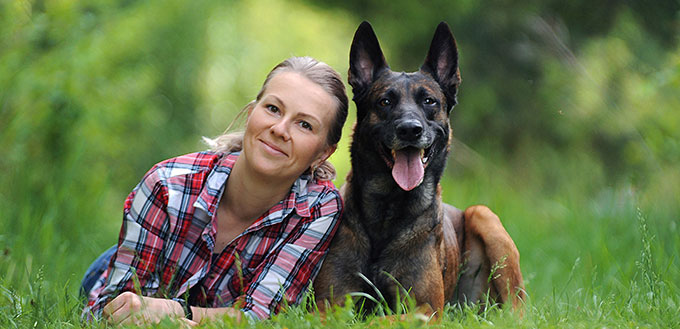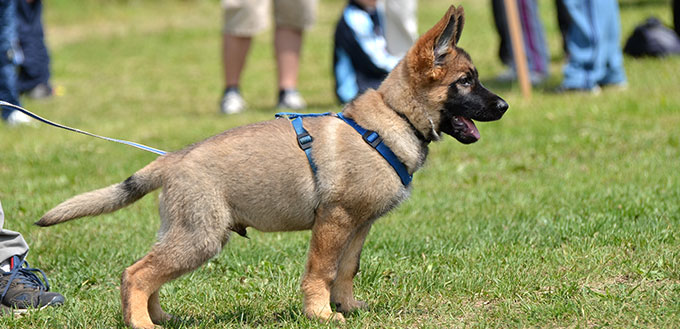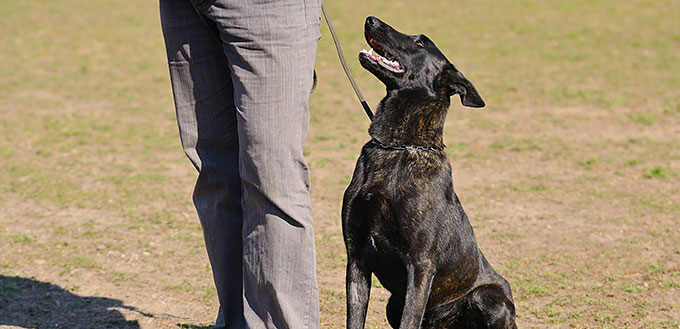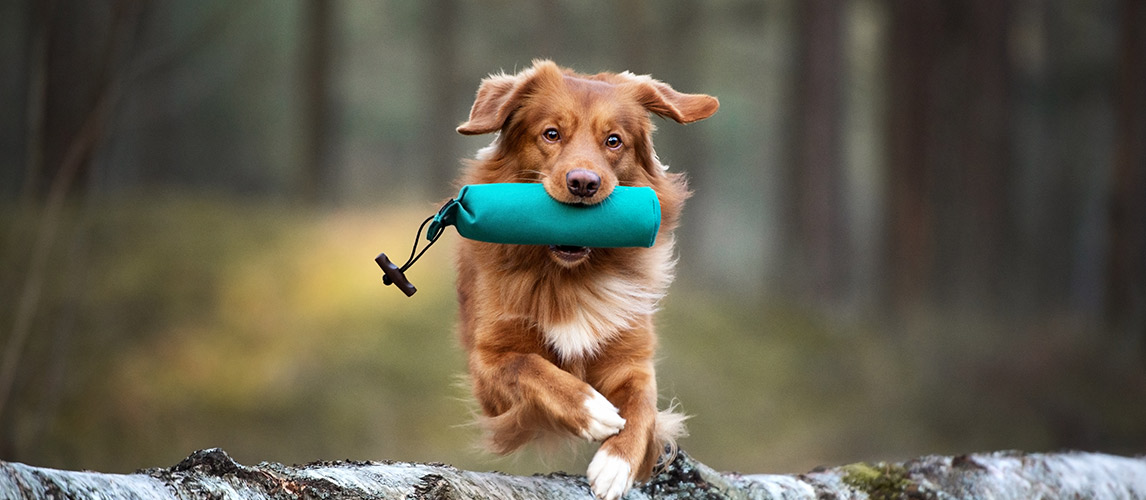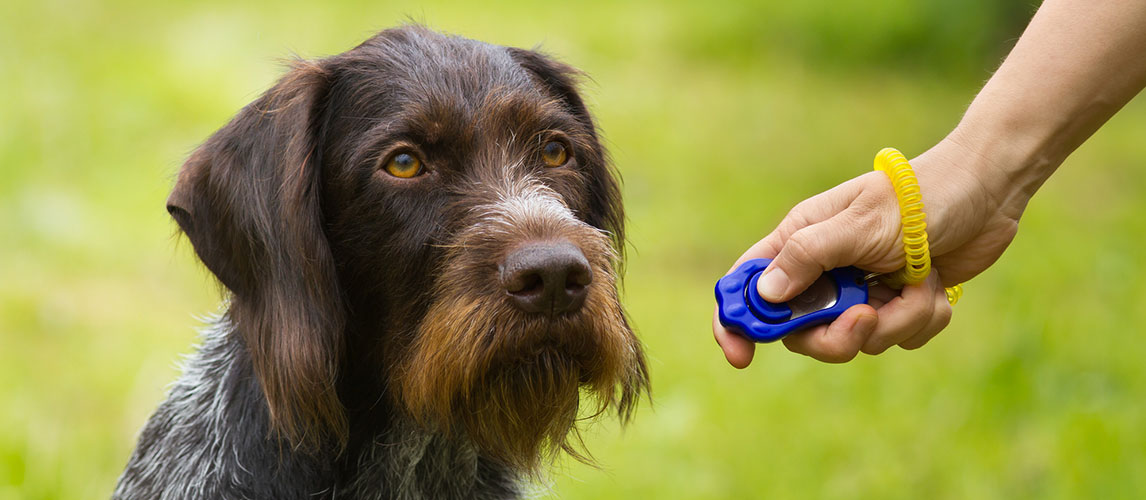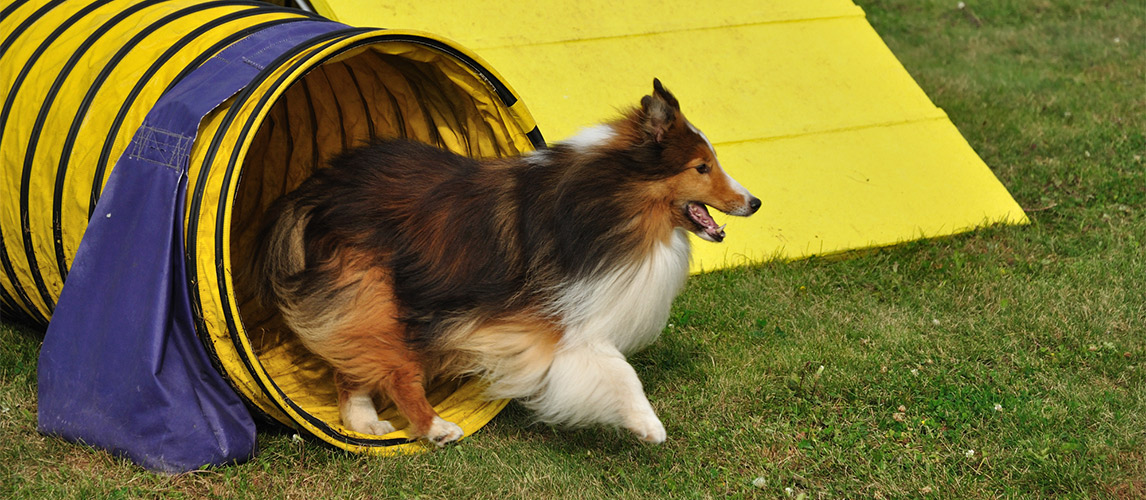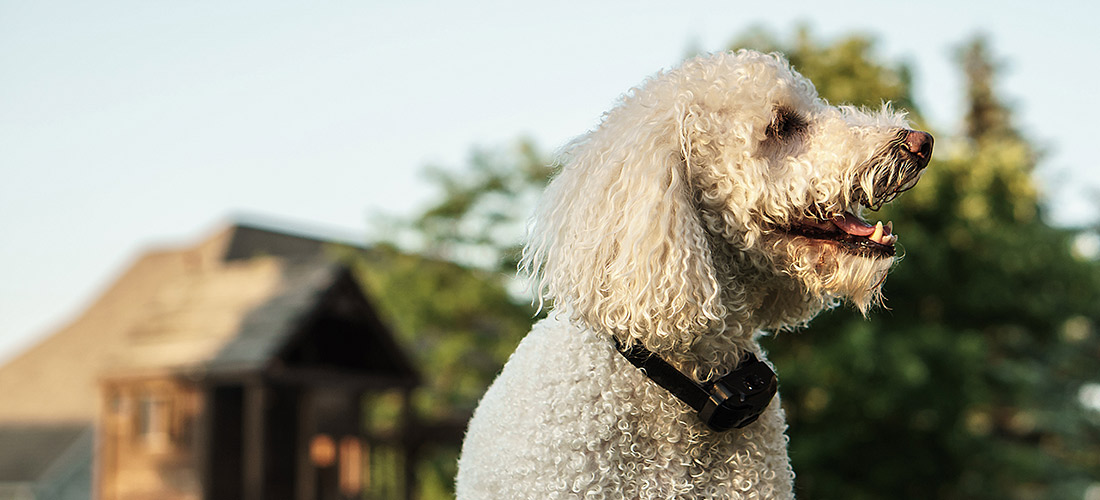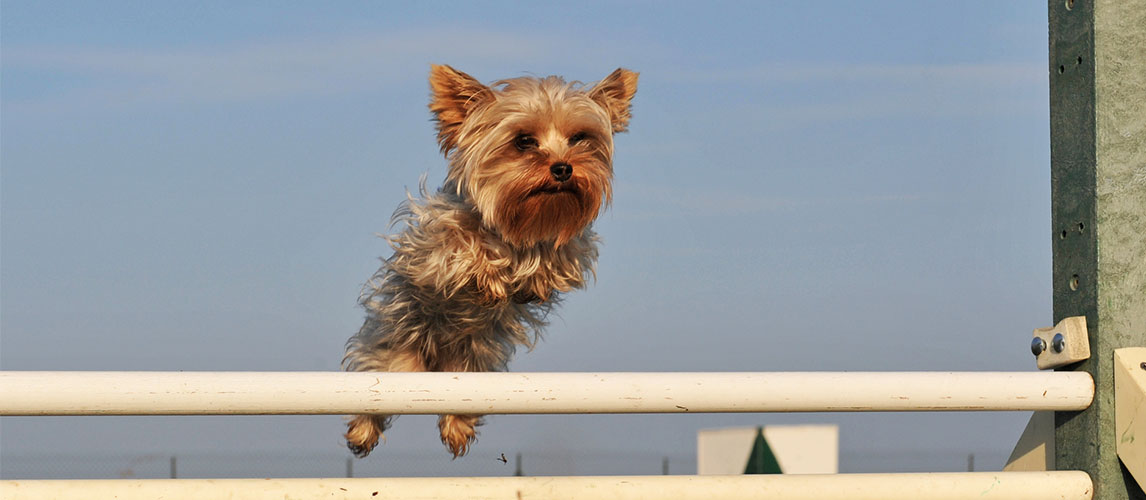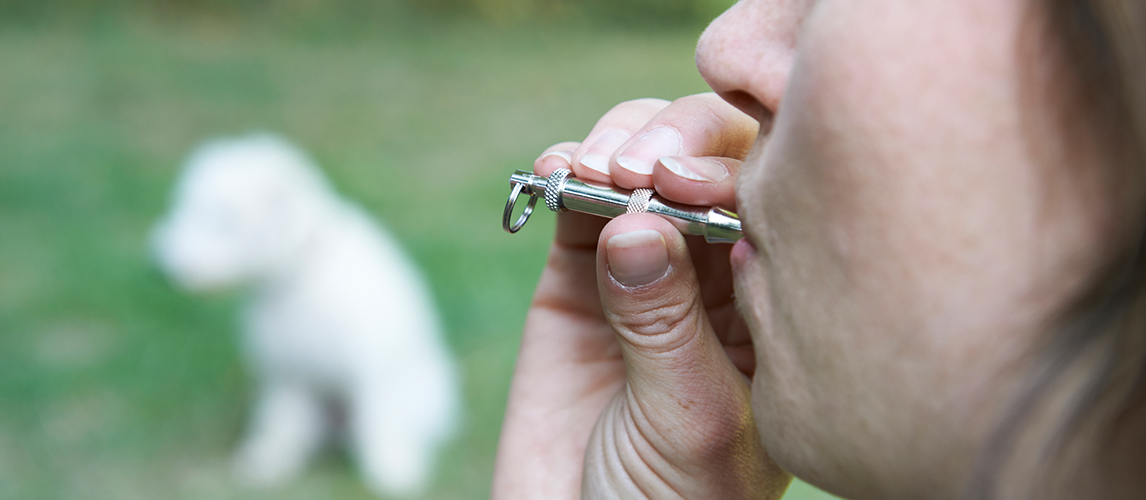Guard dogs can have a bad rep, due to the misconception that they are vicious, stiff around people, and not suited for public outings. But this is all untrue! It is all in the training, which is why we’re here to tell you how exactly to train your pup to be the perfect, protective guard dog.
Guard dogs are socialized from a young age to help them pinpoint threats versus non-threats. In addition, they typically only follow strict and specific commands. This means it is next to impossible for them to be needlessly aggressive toward a stranger in the street. If you’re thinking that you would benefit from having a guard dog, then here are some key tips to help you along the way. Follow this article, and you’re sure to train them right.
What a Guard Dog is Used For
When it comes to domestic use, guard dogs are often used to protect a person’s home and family. They are best known for their professional use, where they work as dogs that guard business establishments or army bases. Guard dogs can also make great family pets. You wouldn’t think so, but it is their love for their family and home that drives them to protect. It is similar for wild dogs and wolves protecting their pack!
By keeping a trained guard dog, you can feel safer and more secure in your home. However, it is not a decision to take lightly. Guard training is intensive and requires a lot of time, dedication, and discipline.
Breeds That Make a Good Guard Dog
Personal protection dog training is best suited to certain dog breeds. Not every dog can handle the responsibility! These specific breeds can understand and follow commands well, maintain their composure during stressful circumstances, and respond instantaneously. Here are the top 10 dog breeds are that highly recommended for such training:
- Boxer
- Great Dane
- German Shepherd
- Rottweiler
- Doberman Pinscher
- Bullmastiff
- Akita
- Tibetan Mastiff
- Chow Chow
These breeds have a long history of protecting throughout the world. Perhaps the most famous of the bunch are German Shepherds and Doberman Pinschers, which are frequently chosen as police dogs. Movies and other media have also portrayed these breeds as formidable guards. It isn’t just those two that make excellent guards! All of these breeds are known for their intelligence, strength, and reliability. Three traits that make for excellent, future guard dogs.
The Difference Between an Attack Dog and a Guard Dog
Many believe attack dogs and guard dogs to be interchangeable. This is the worst misconception yet! Firstly, guard dogs are not attack dogs. It is vitally important that you know the difference between the two before you start training.
Training a guard dog does not include the use of attack instructions. Instead, it means teaching them to bark when it is appropriate. A guard dog protects by watching their surroundings and alerting their owners to potential threats through barking. On the other hand, attack dogs are trained to first bark as a deterrent to the threat, and if the threat continues, they can be given the command to attack. Guard dogs wait for a threat to approach, while attack dogs initiate a threat.
Finally, before teaching your dog to protect you, it is best to establish a specific training style. Let’s take a deeper look!
How to Train a Protection Dog
Here’s another difference: Attack dogs can’t socialize and only trust their trainers. This means they are only suited to jobs that require an offensive command. If you want a pet that can protect you and your family, by alerting you with sound rather than physical assault, then you are looking for a guard dog. Big difference there! Look below to see the best practices on training your guard dog in a non-aggressive manner.
Start Early
If you want a good guard dog, start training them at an early age. Not sure what age that is? Guard training should start at the same time as potty training. Next, obedience is key! You want to be absolutely sure that your dog will immediately respond to the “sit” and “stay” commands whenever they are given. Once your pup starts walking with you outside, then you will need to teach them to maintain the “heel” command. This is best done without a leash. That way, you can be absolutely 100% sure that they will come back to you when called.
Once they’ve got the initial instructions down, you will need to train your dog to bark on command and “leave” when you say so. All of these basic commands make up an incredibly important baseline. If your dog is doing well, then you know to continue with guard training!
Be sure to give your dog plenty of positive reinforcement. A treat each time they do as they are told can go a long way. Rigorous training is hard work, so a reward for good behavior will remind them that it is worth it.
IMPORTANT: If your dog struggles to learn these commands, or refuses to do what they are told, do not continue with guard training. Your dog needs to be completely reliant before you can teach them to protect. It is absolutely essential that they respond to every command, every single time. If they do not do this, then you risk the possibility of them turning into a more aggressive dog that won’t back off when told.
Socialize Your Pooch
In order to avoid your pup seeing danger in every passer-by, you need to keep them thoroughly socialized. Make sure they regularly meet friends and family from an early age, ideally before they hit 16 weeks, and around the time you start training. When on walks, take them to dog parks so they can meet other pups and their owners. Dog parks are always a great place to start. And fun for you, too!
Your puppy will be curious, as they are still new to the world. Allow them to investigate! Reward their bravery with a treat whenever you feel it is warranted, to encourage confidence as they grow.
IMPORTANT: Much like obedience training, every dog has the potential to develop a nervous personality. If your dog’s confidence is rocky, or if they are struggling with socialization, it could be a sign that they are not suited to personal protection work.
Teaching Your Pup the “Bark” Command
The “bark” command is best taught with a treat in hand. Be ready to reward their obedient behavior! Their learning experience so far has taught them to be accepting of others, but now is the time to encourage them to bark if a stranger is approaching the house. By using the “bark” command every time they respond to a stranger outside of their home, it will cause a word association for your pup. Eventually, they will respond to the “bark” command, even when there is no one around.
Don’t forget to also create a “stop” command, so that you can better control their barking. Ideally, once the command is given, they will cease barking immediately. Again, keep a treat handy so that when they do stop, you can reward them appropriately. Given time and patience, you can get the “bark” command down to the perfect pitch.
Consider a Dog Trainer if You Are Struggling
If your dog is proving stubborn and disobedient but you wish to continue with training, don’t hesitate to approach a professional obedience trainer. They can give you tips on how to get your dog to respond better to you. Either way, their expertise will surely open your eyes to training you hadn’t initially thought to try! A professional dog trainer can be costly, but it is a worthwhile investment for ensuring you have the greatest guard dog.
Continuing into Attack Training
Should you feel the need to pursue the “attack” command, it is highly advised that you seek professional trainers first. There are certain parameters that have to be met and equipment that needs to be used to ensure that everyone is safe during this part of your dog’s guard training. Furthermore, you should always seek to train your dog in the safest form of attack possible. Professional training schools will have everything that you need to take this next step forward, if needed.
The Origin of Guard Dogs
The use of guards dogs dates back as far as 4,000 years. Dog protection spans the entire planet! Wolves were initially domesticated for this purpose. Later, they were bred to preserve certain features and characteristics that would keep their natural protective instincts alive. During the early stages of domestication, these dogs were wanted for their natural hunting abilities and their pure, loyal strength. The same traits they would use for their own pack. Looks like humans have been part of the dog pack for hundreds of years!
The consistent breeding of guard dogs over the centuries has meant that certain breeds have maintained these pack-like characteristics required of a protector. These traits include attentiveness, intelligence, loyalty, obedience, and responsiveness. Not to mention having a natural drive for protection!
FAQs:
Q: Do dogs instinctively protect their owners?
A: Recent research has shown that roughly a third of dogs do, in fact, have a natural drive to help a person in distress, especially if that person is their loving owner! The exception is with emergency protection training. Though a house dog’s protective instinct is extremely endearing, and can certainly help you to feel more secure at home, it is very different behavior from that of a trained guard dog. Teaching your pooch to guard the house will result in a much more diligent, alert, and protective dog.
Q: How much does it cost to teach a dog to protect?
A: The price for training guard dogs is entirely dependent on the company or trainer you use. To train your dog fully, a personal dog trainer is required to ensure you get the best results from the process. Purchasing a guard dog that is fully trained can cost up to $40,000. That’s a lot! But training a dog yourself is closer to $120 a lesson. If you want to train your dog right, then it will take more than one lesson a week.
Q: How long does it take to train a dog for protection?
A: These things don’t happen overnight. Much like the price, the amount of time it takes can depend on the speed that your dog can learn, their breed, the style of training you use, and the frequency of their training. You should start with basic obedience training and a rigorous training schedule around six months of age. It will take around two years to get a fully trained guard dog, depending on their breed.
Q: Should I train my dog for protection?
A: You should consider carefully before stepping into the world of guard dog training. If you simply want your dog to stop barking at random passersby on command, then that is easily remedied with the proper obedience training. If you live in a place where you feel unsafe, and think that a personal protection dog would make a big difference, then it could be the right path for you. Before pursuing this route, you should have a discussion with some guard dog handlers. This way, you can figure out for sure if it sounds like something you would be able to manage yourself.


